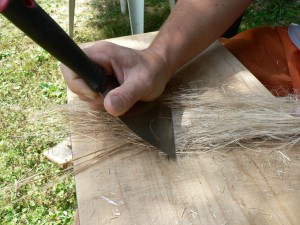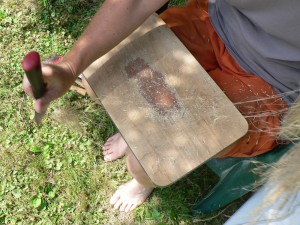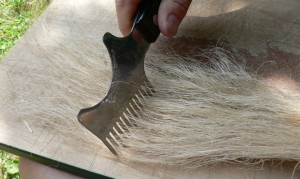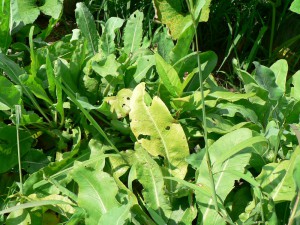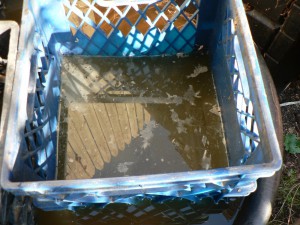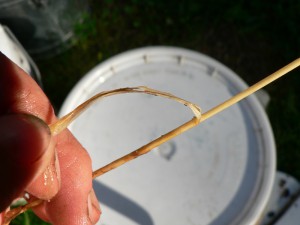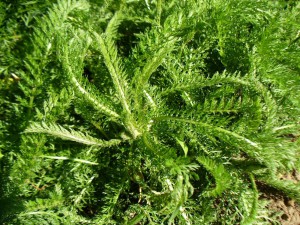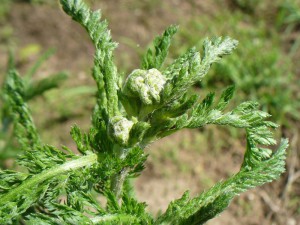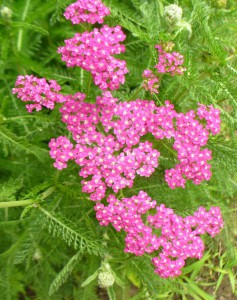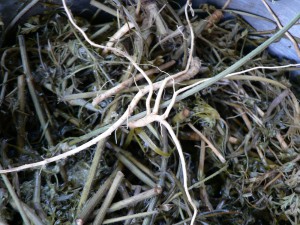At long last, I have been processing some of my stash of retted and broken flax. This process is traditionally called dressing, though I am not using traditional tools or techniques. However, I am having success using a variation on a method that Chris Hammel (12/24/2023 link updated) showed me, which utilizes tools from the kitchen and hardware store, and other tools that a fiber person might have lying around the apartment.
Many of these bundles I believe were under-retted, which makes it hard to clean them. On the other hand, it’s not impossible, and I am feeling relieved not to have ruined several years’ worth of fiber.
First, I “scutch” with a flexible 3 inch putty knife on an old wooden cutting board.
All the small branches at the top break right off at this point. I’m not sure how useful they might be for other projects because they are still attached to the woody parts of the plant and I think they would be really hard to clean. I scrape them onto the ground. Some I put into the compost, and some I save in a bag for the time being. The photo below shows a clump of tow falling to the ground.
I actually split my bundles into two or three sections for dressing. The size I originally tied when I harvested, which seemed fine for drying and retting, is too thick to handle all at once. I start at the branchy end of the mini-bundle first, then work down toward the middle. Then I flip it over, start at the root end, and work toward the middle. The middle is the hardest part to clean because the fibers are denser here. I spread it out into as thin a layer as I can and scrape and scrape. This part takes a long time.
Next, I use a spiky comb-like tool that I bought at Leader Hardware here in Amherst (12/24/2023 Now Ace/Hamshaw). I don’t know what its real function is supposed to be, but it works very well as my “rough hetchel.” Chris says she uses a metal dog comb, which is probably similar. I like the fact that mine is spiky. I don’t know if the spikes really help or not, but I still like it.

